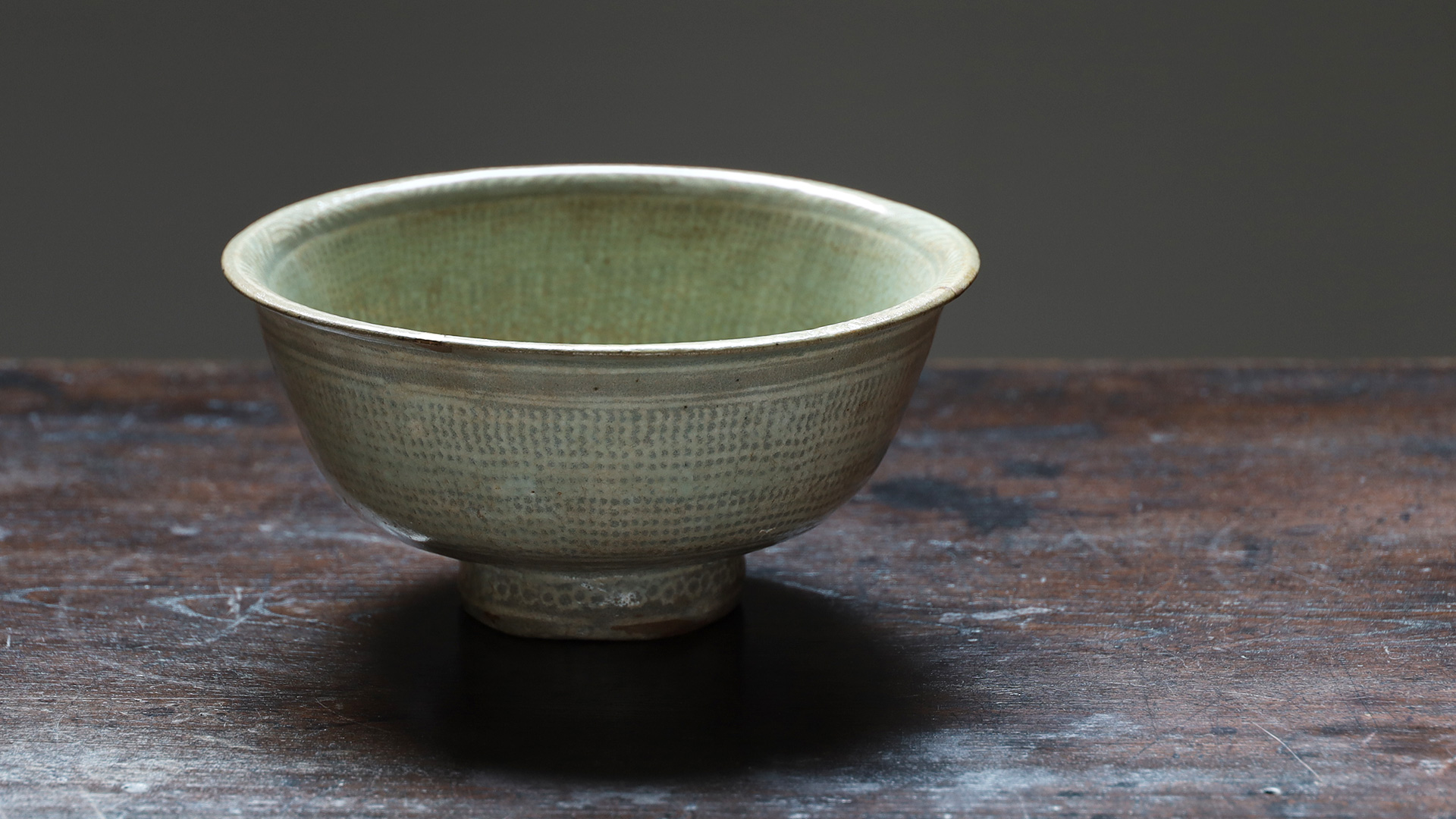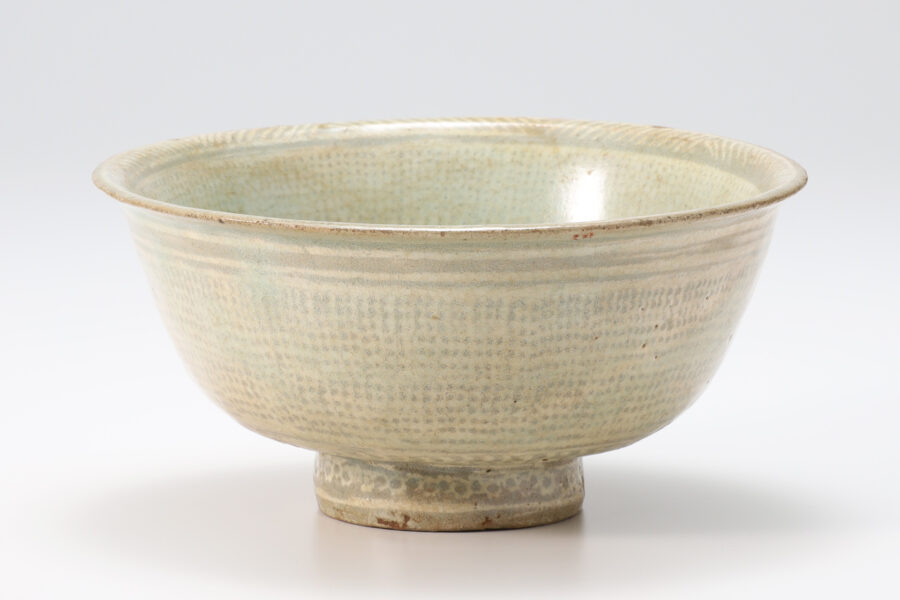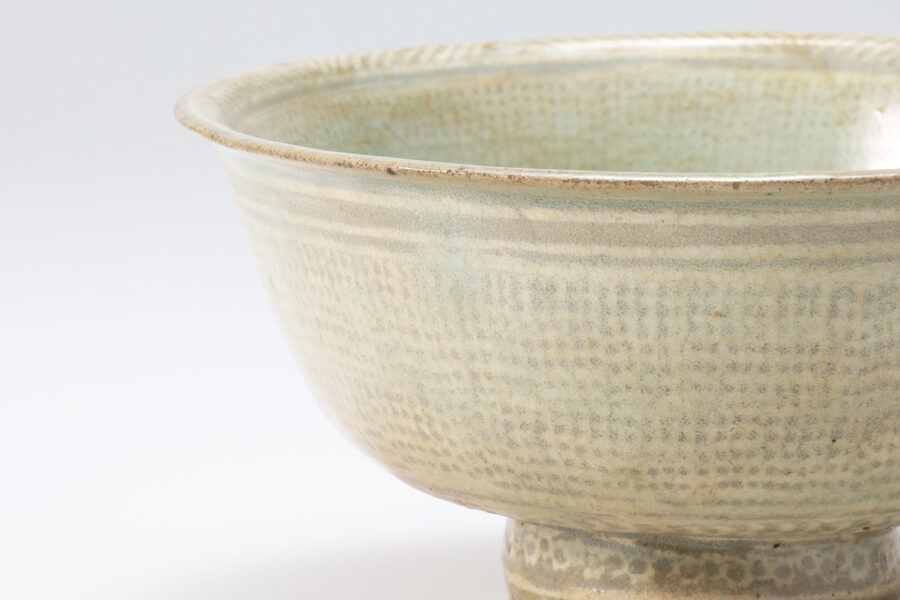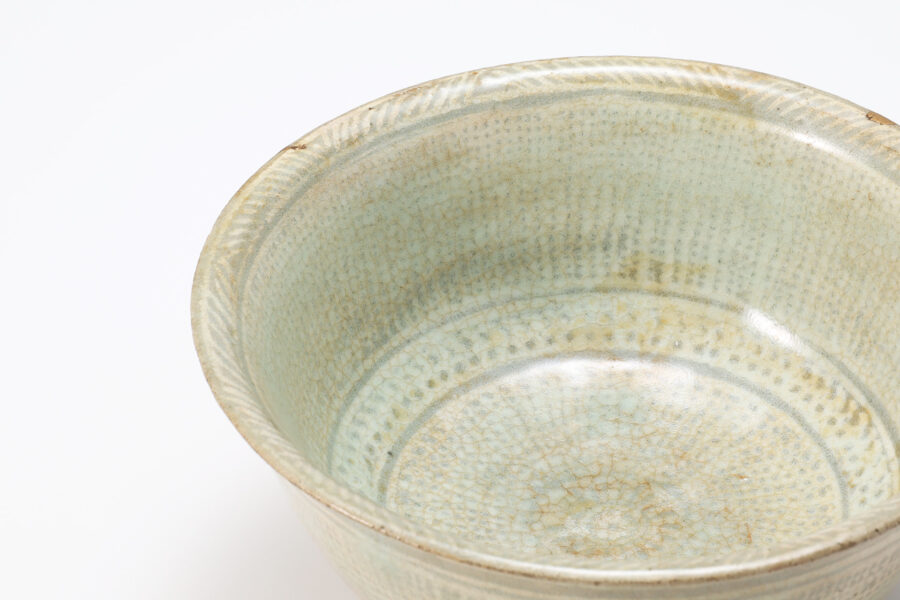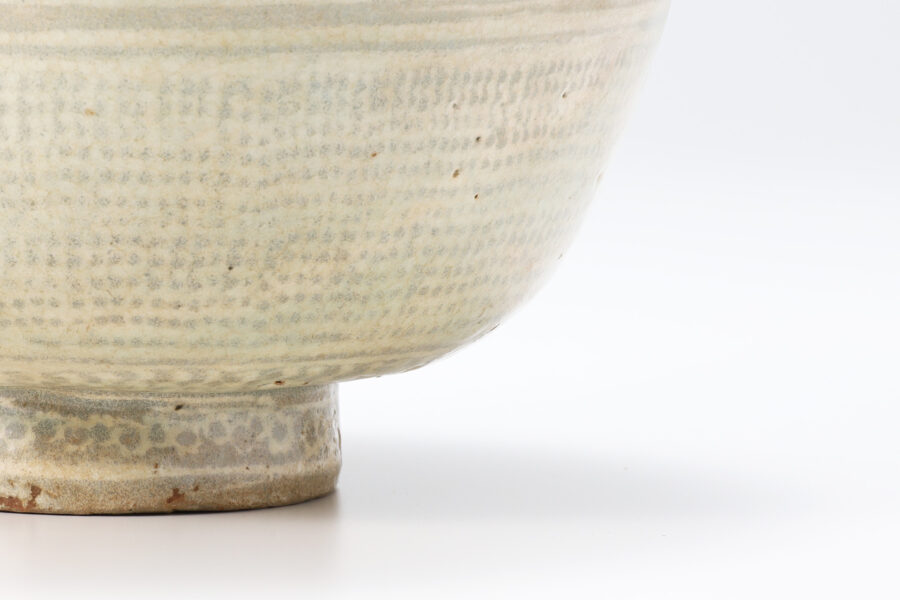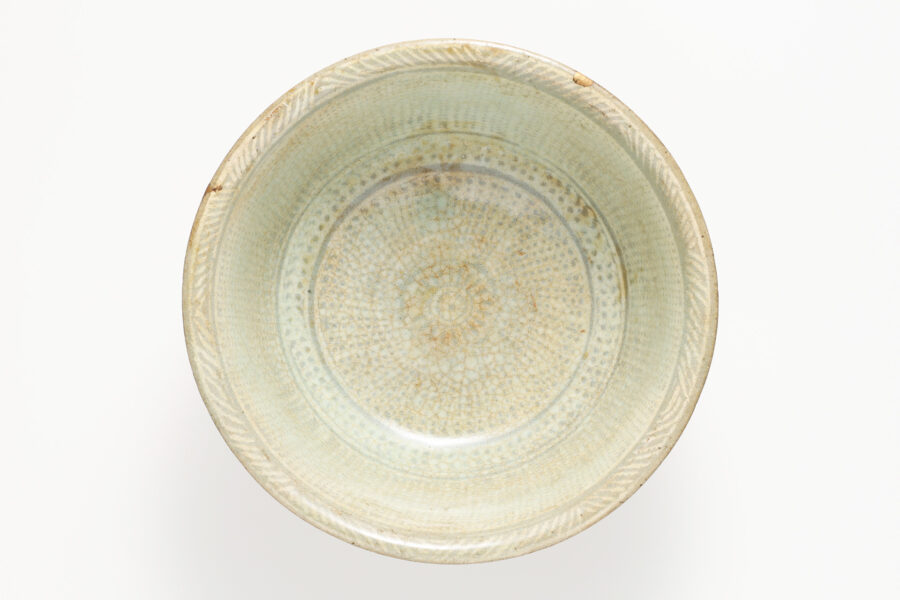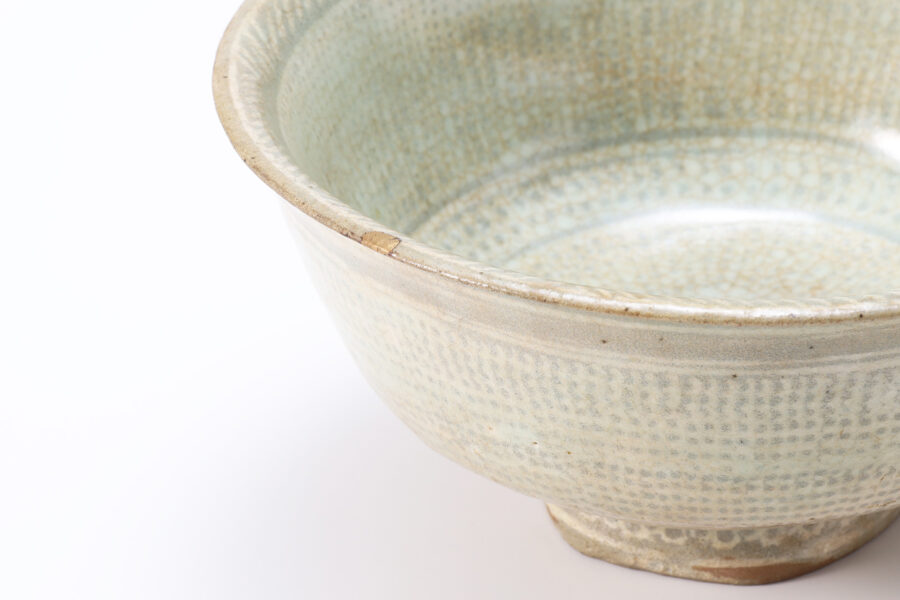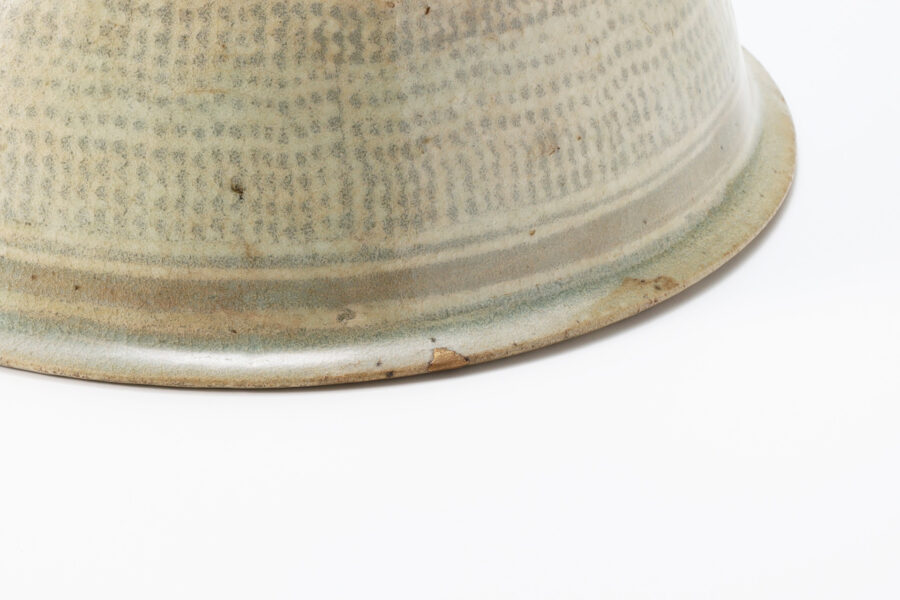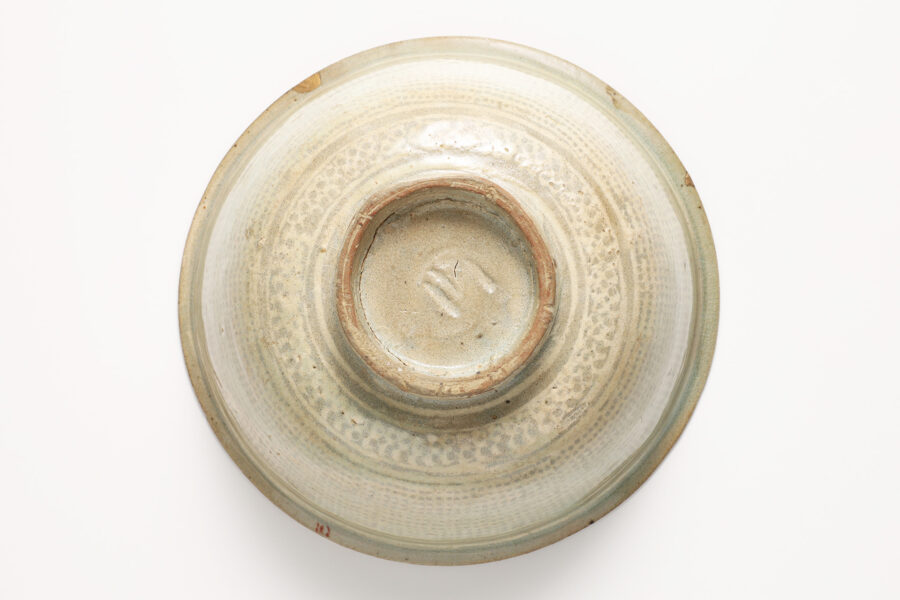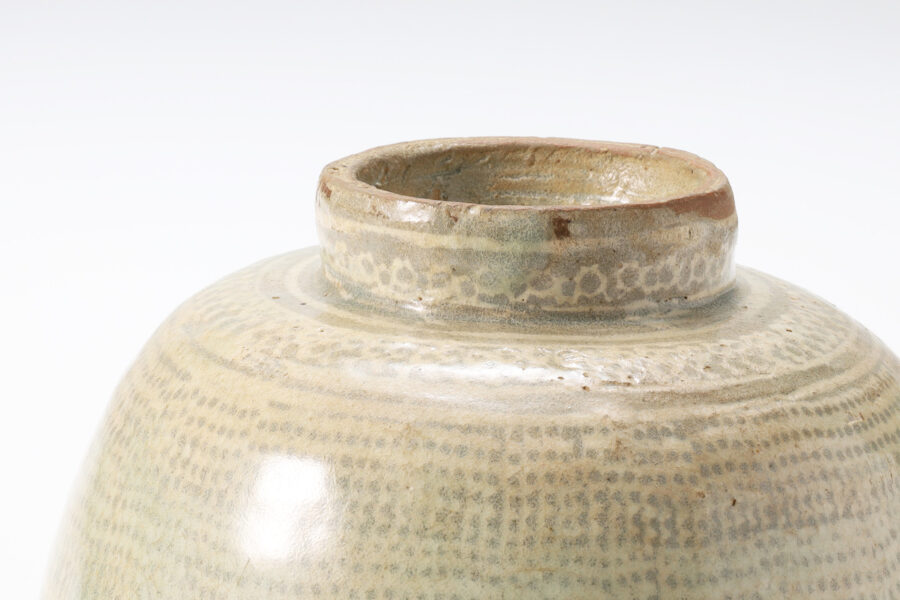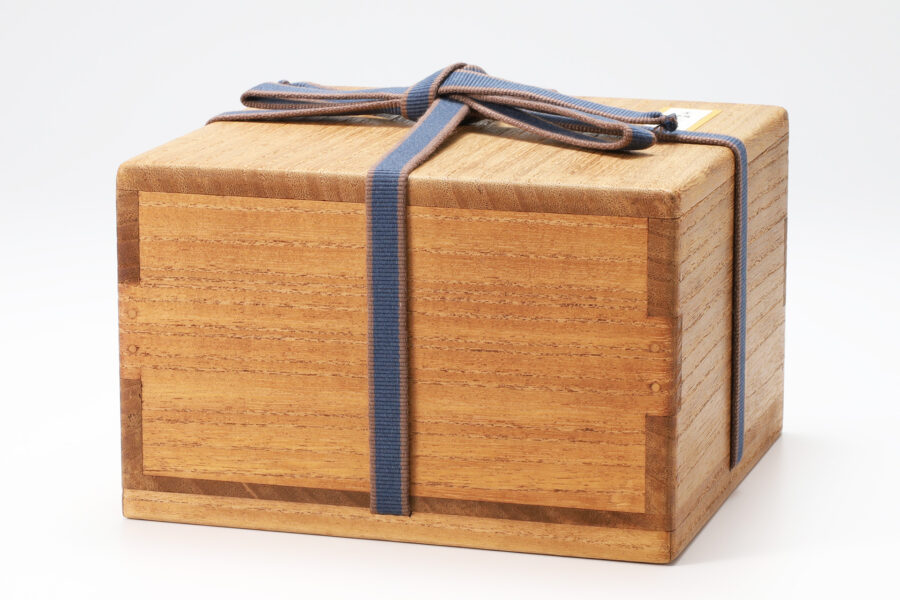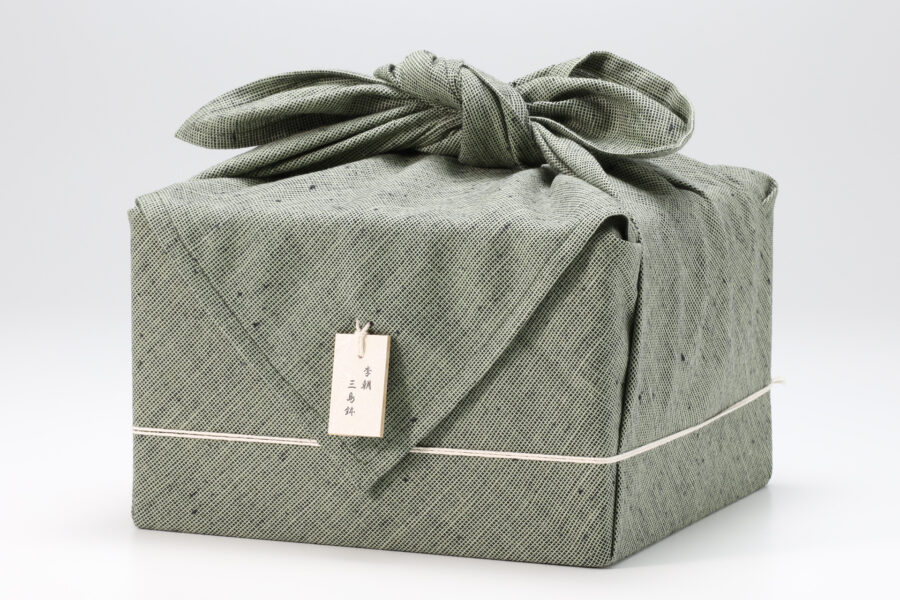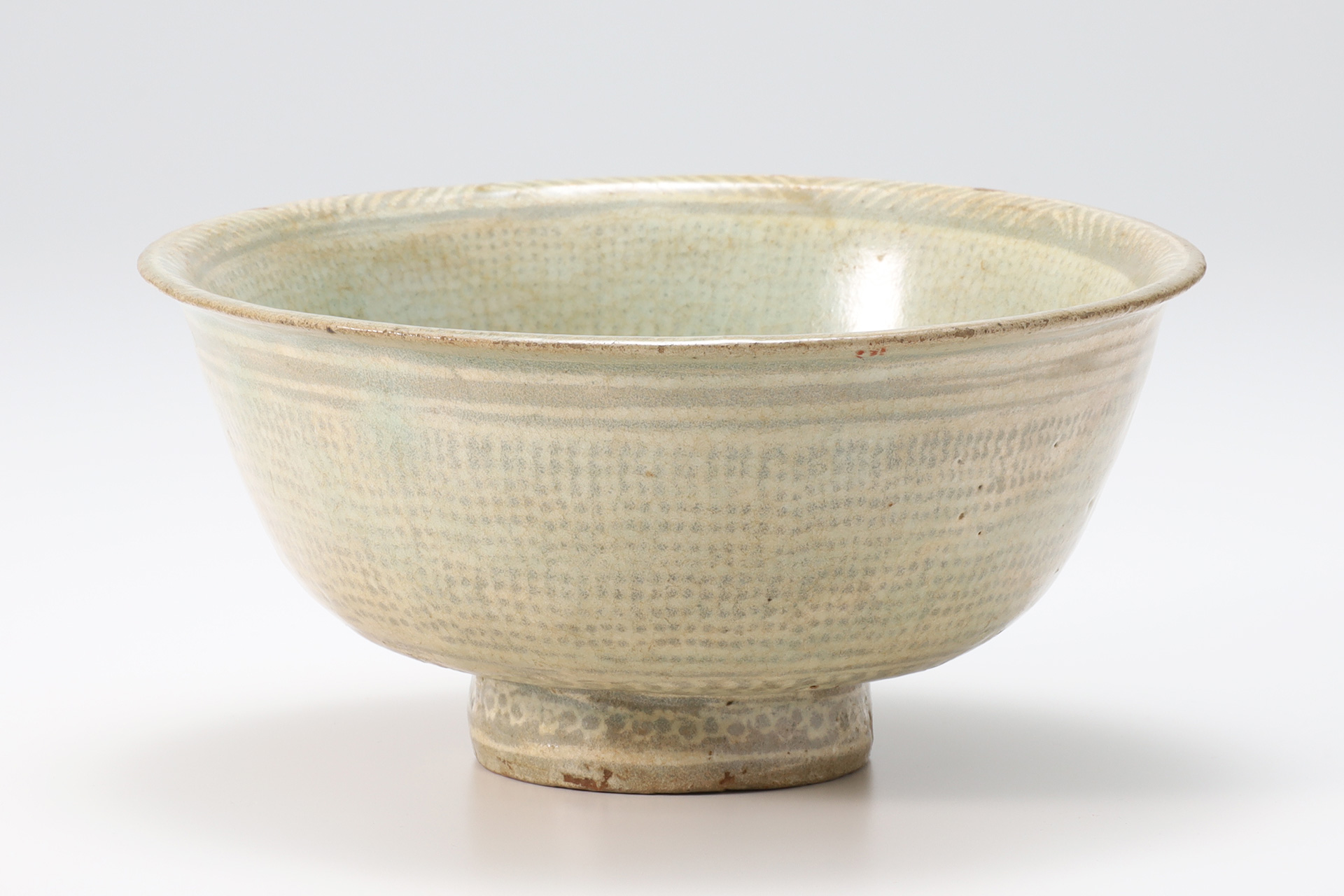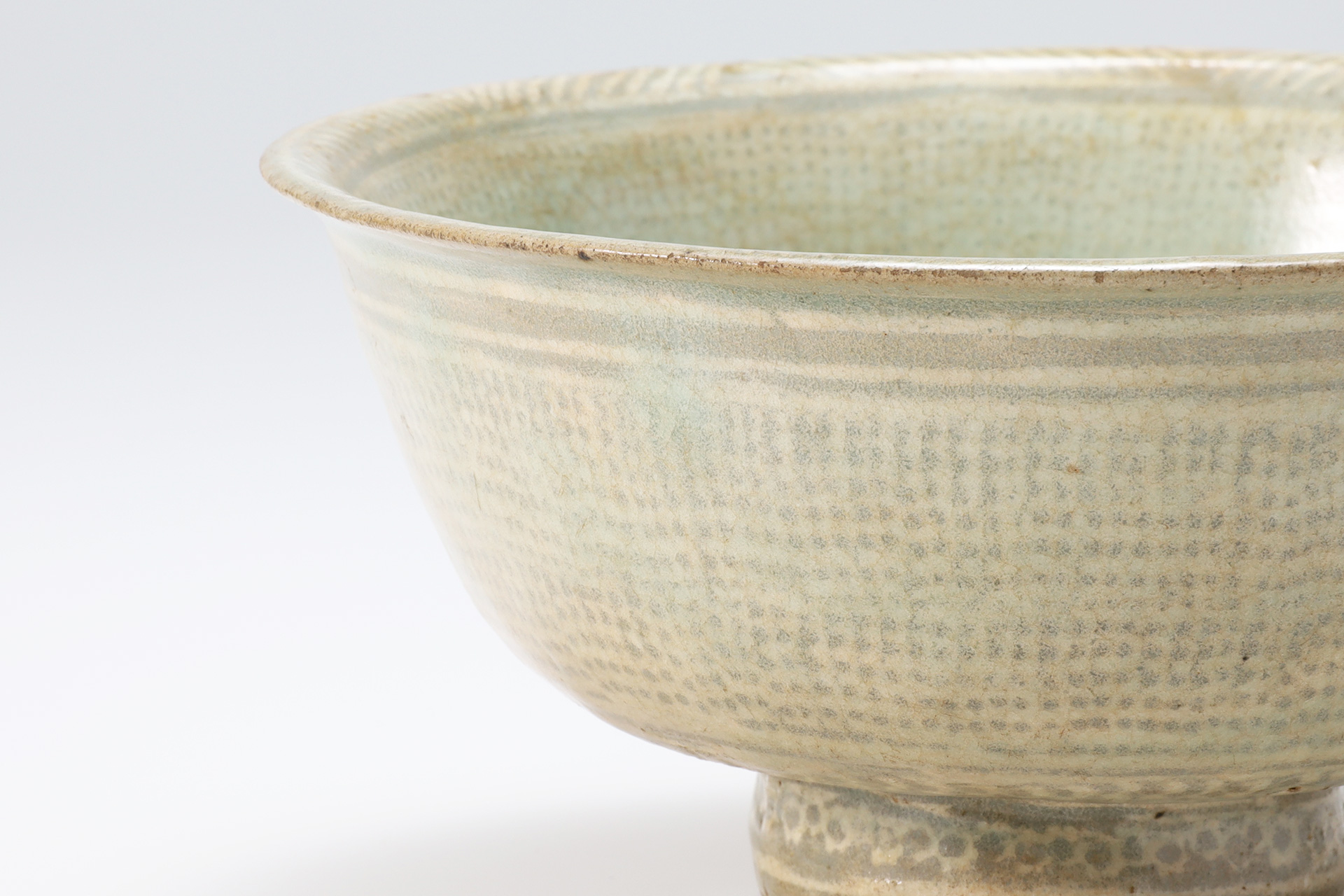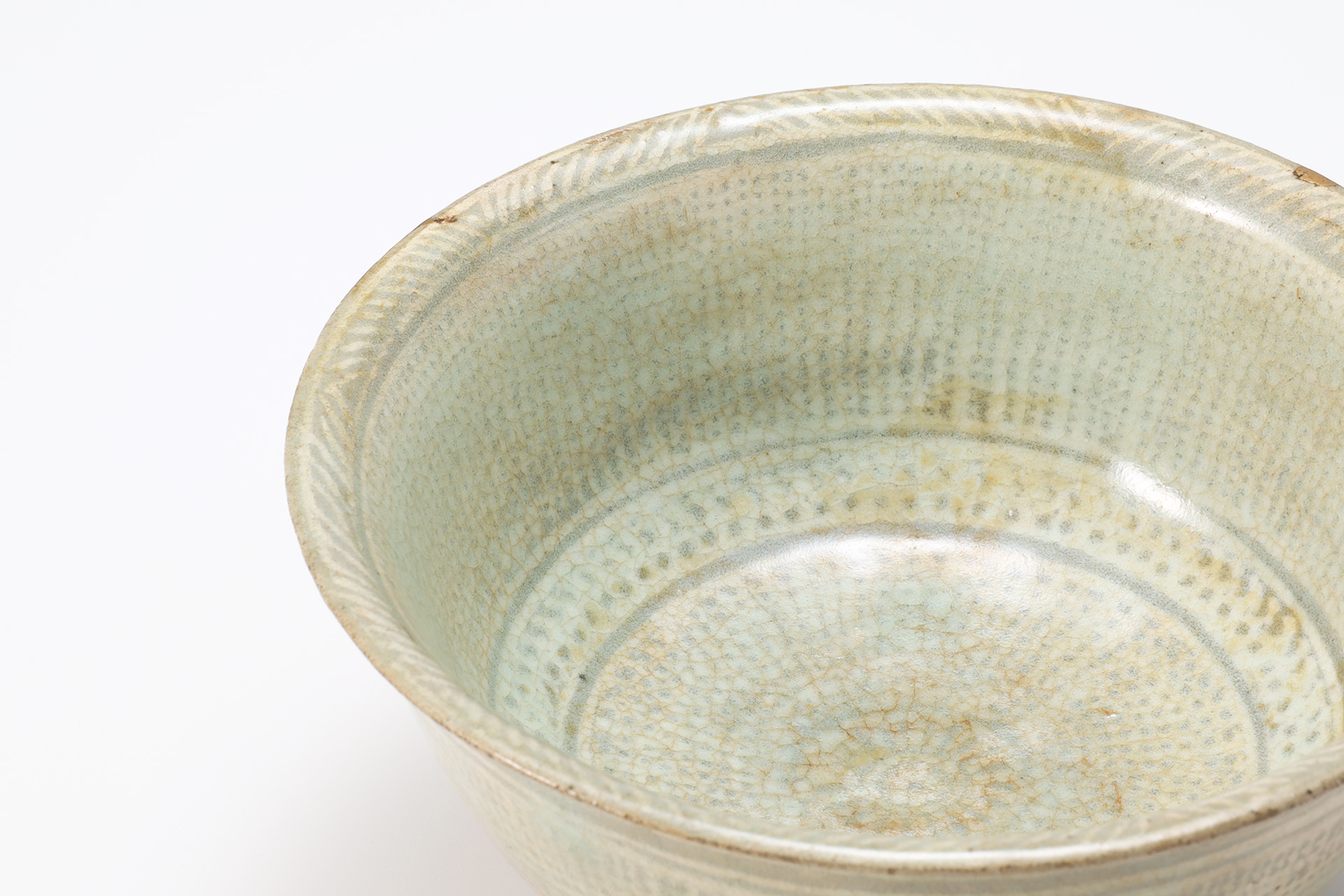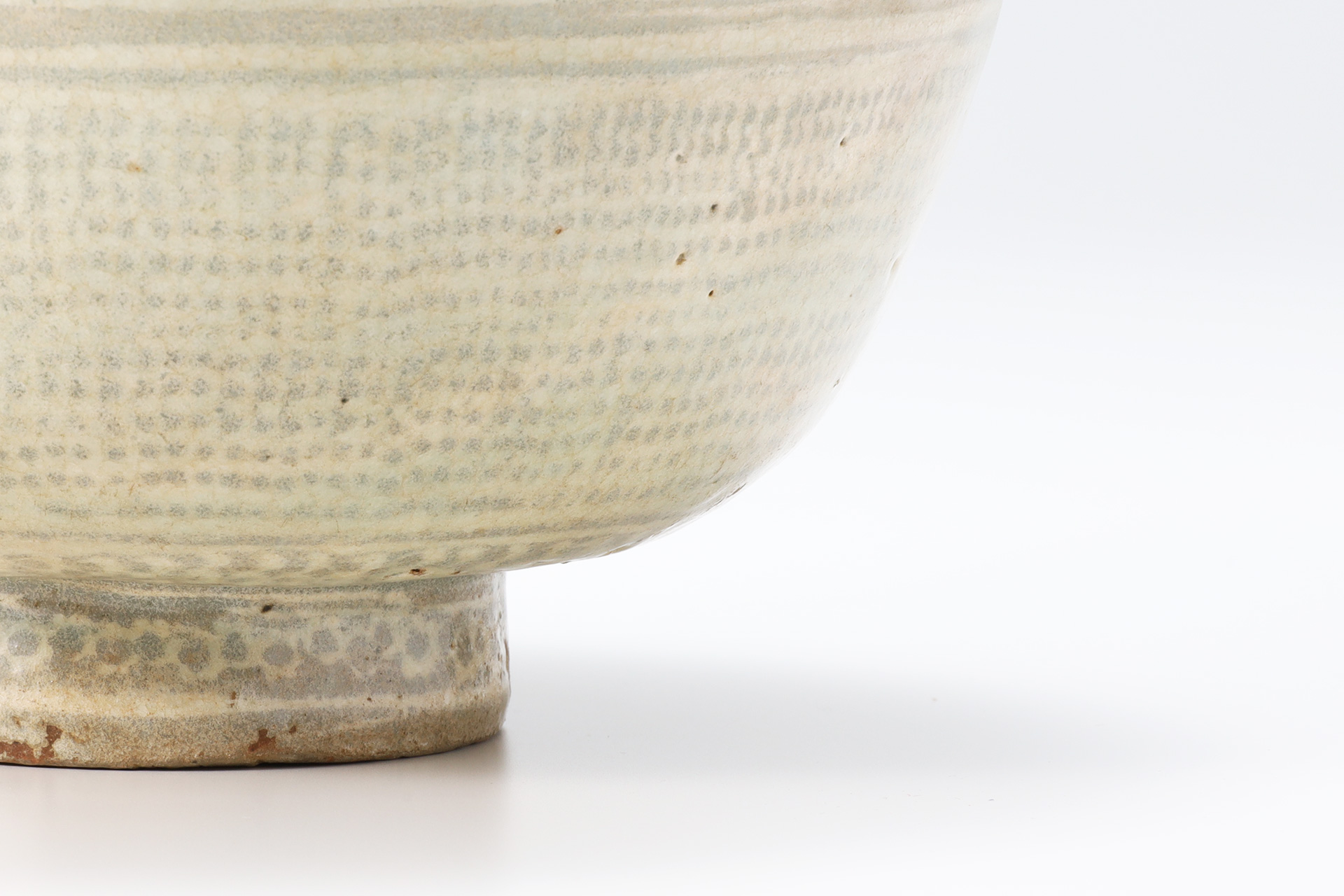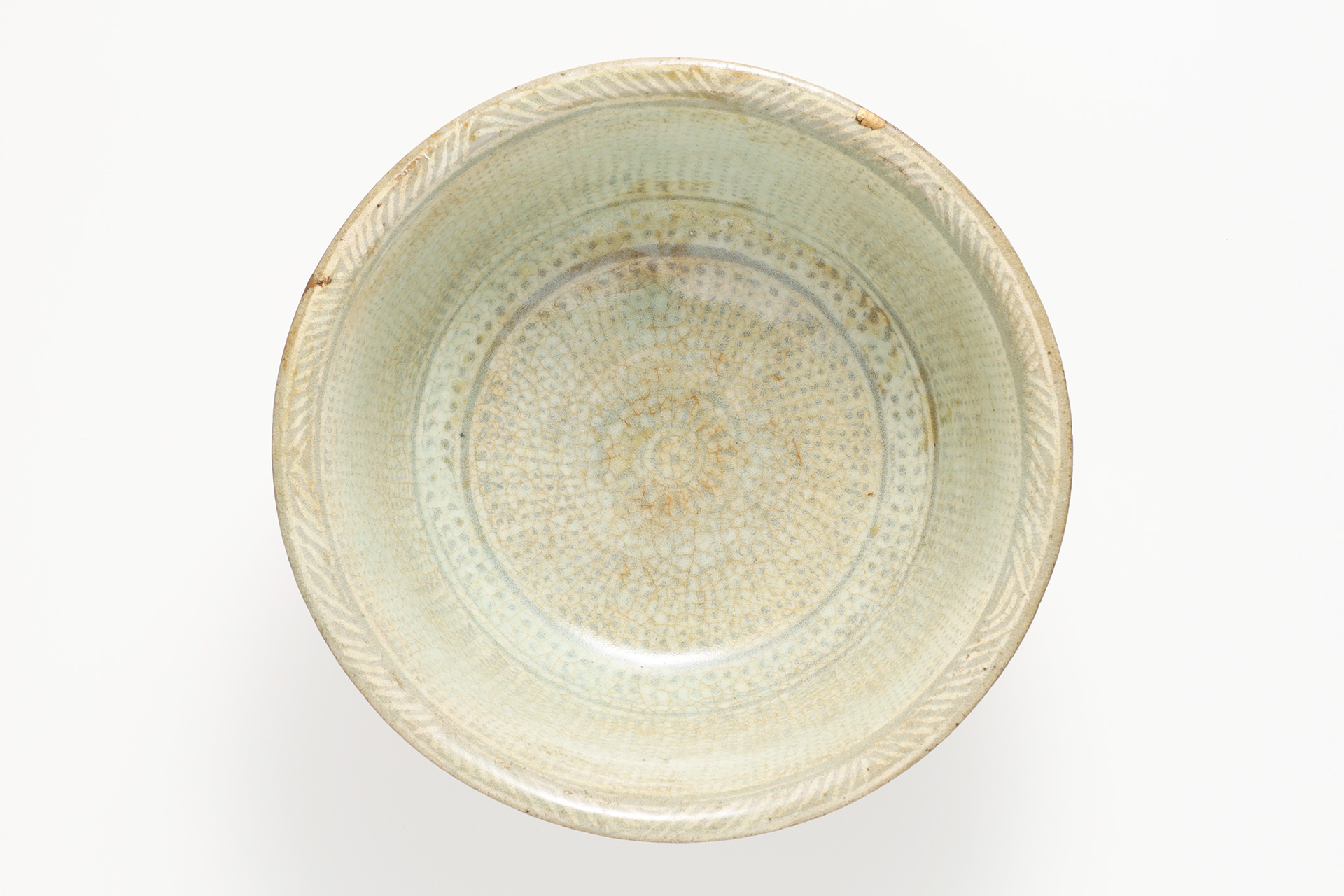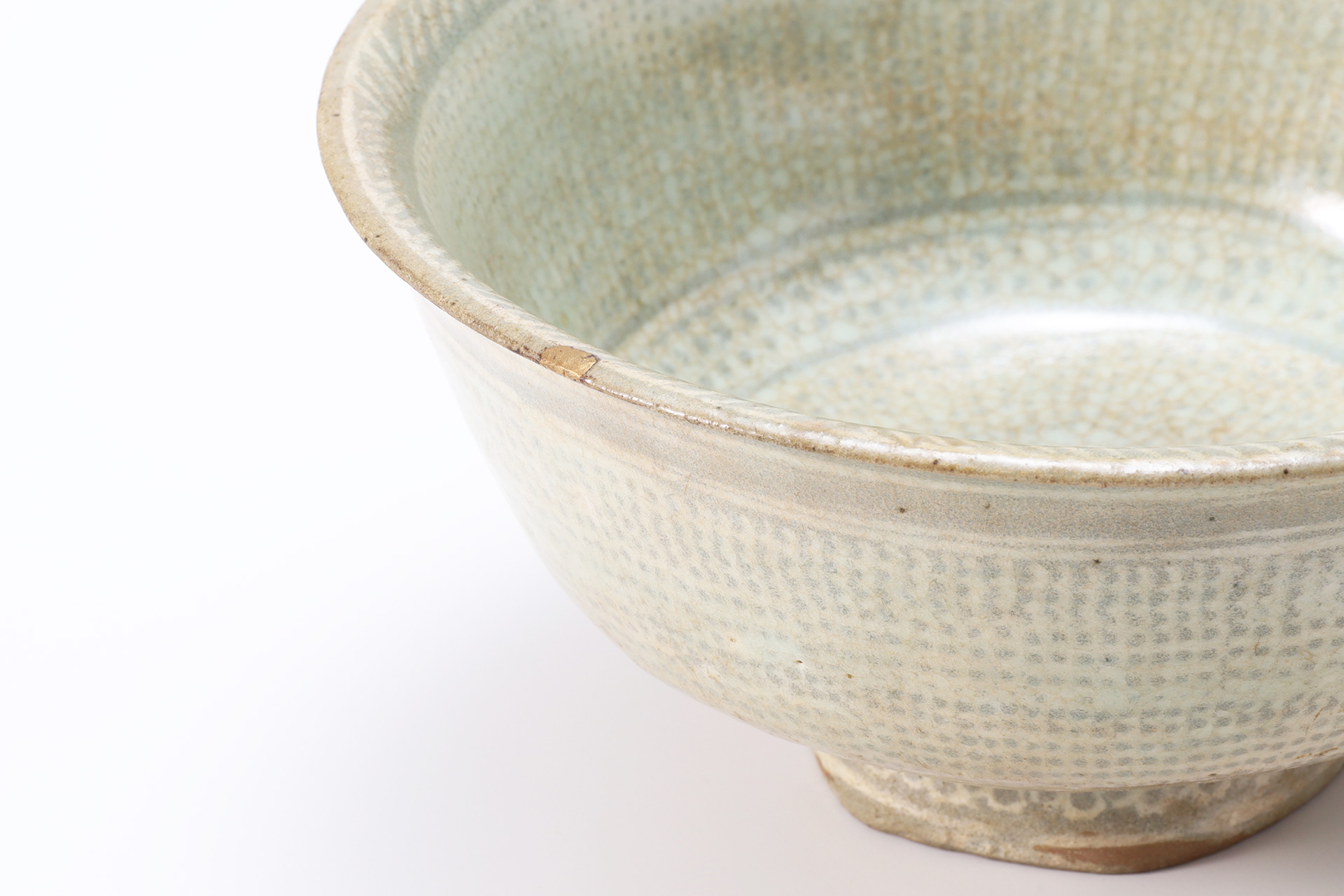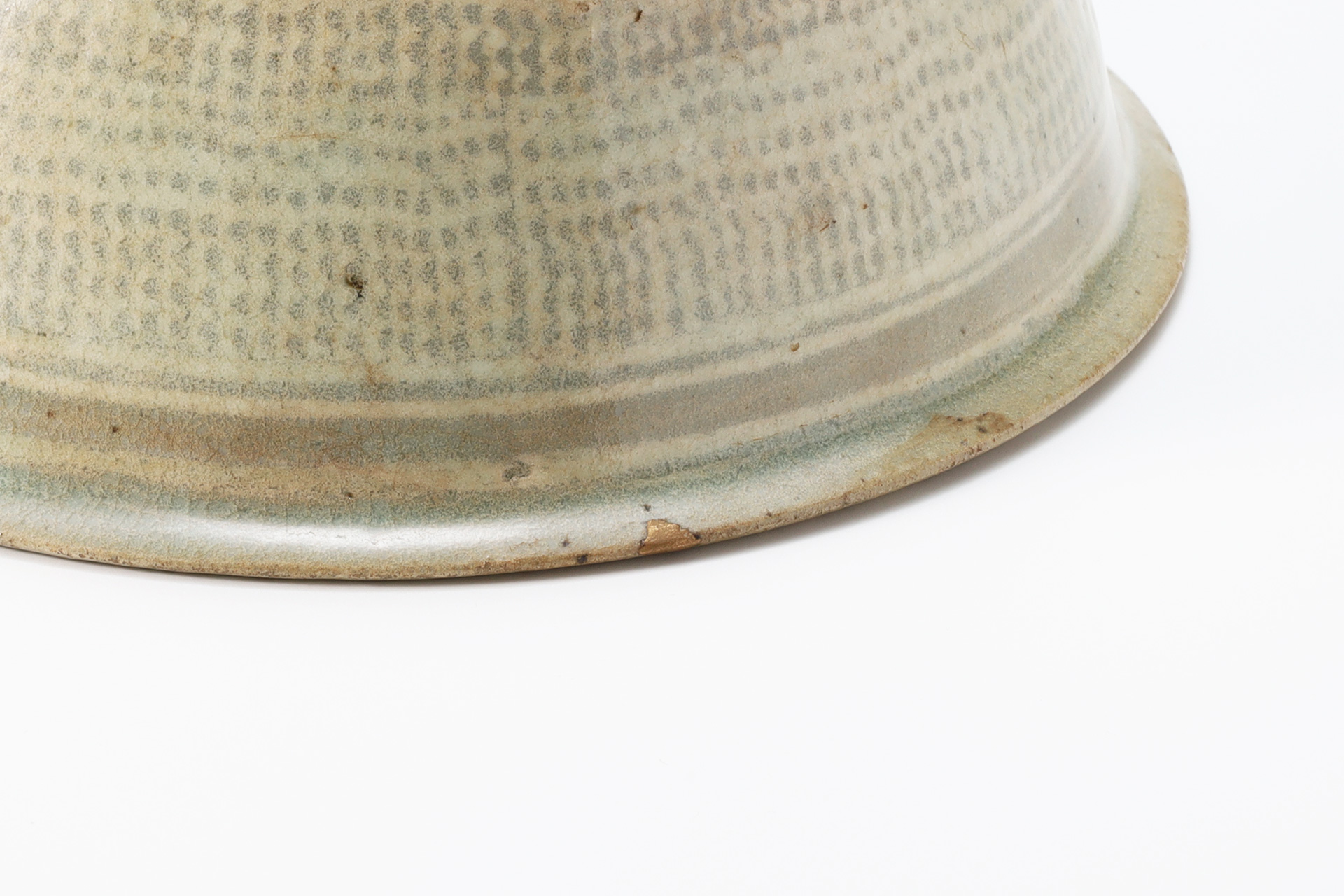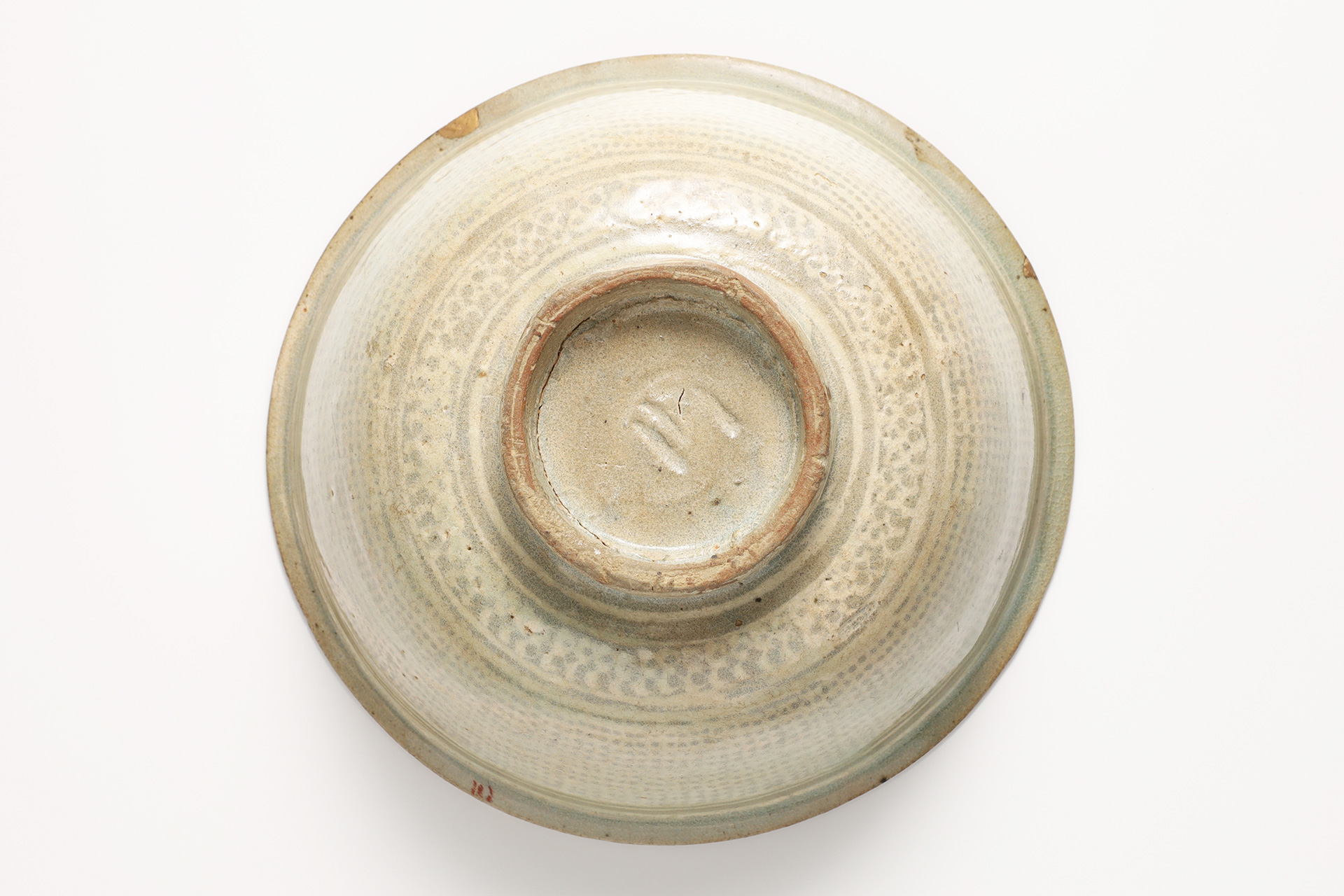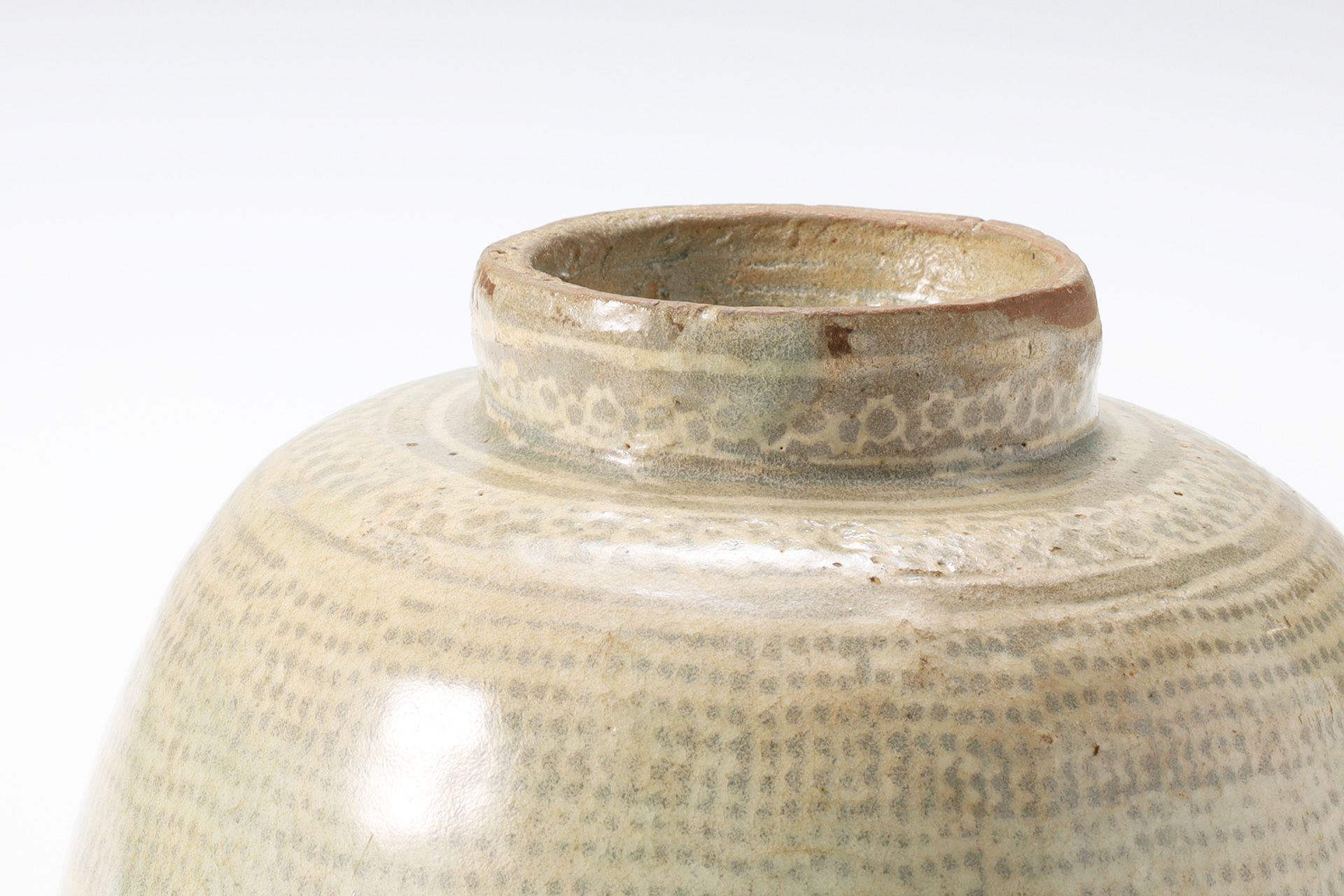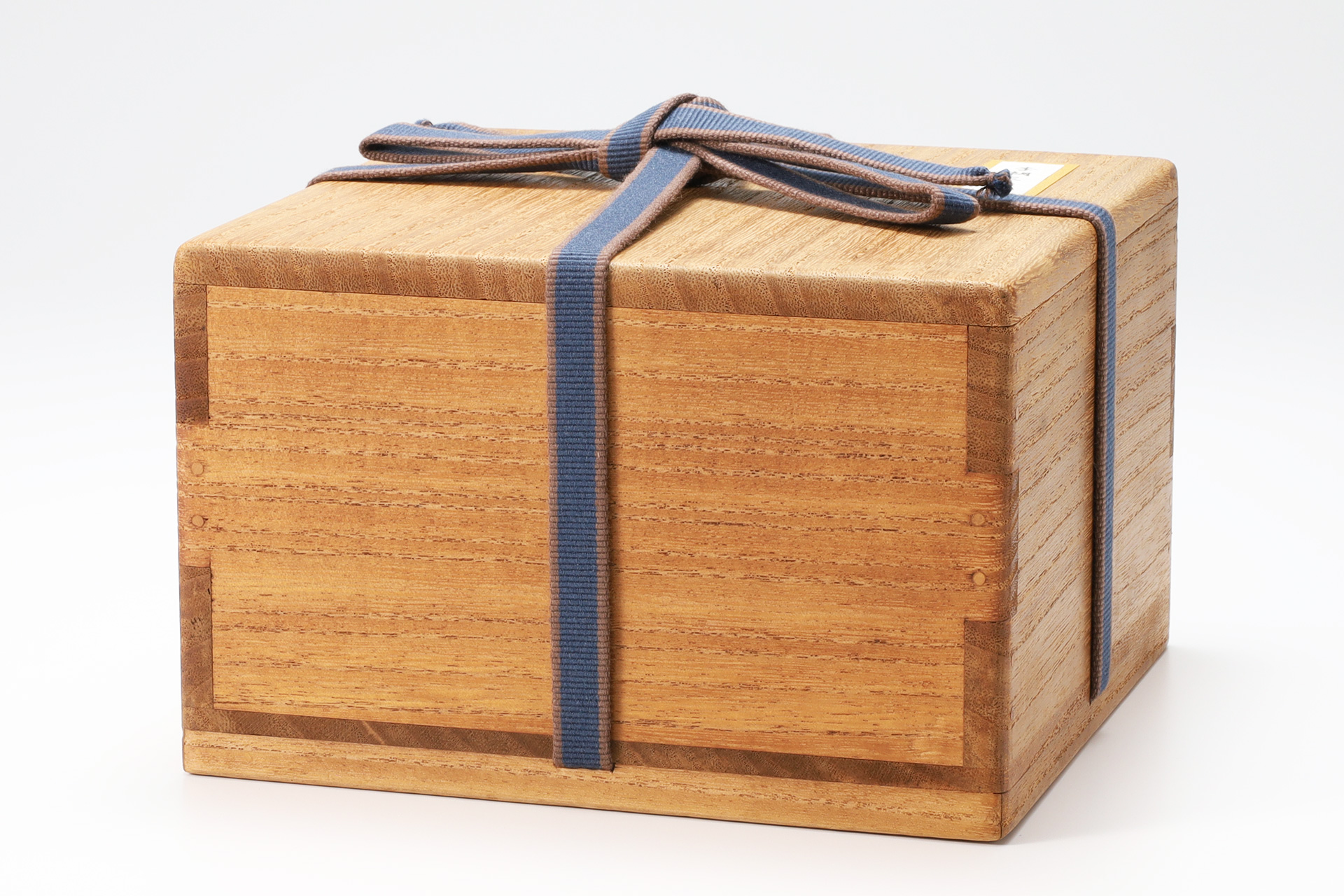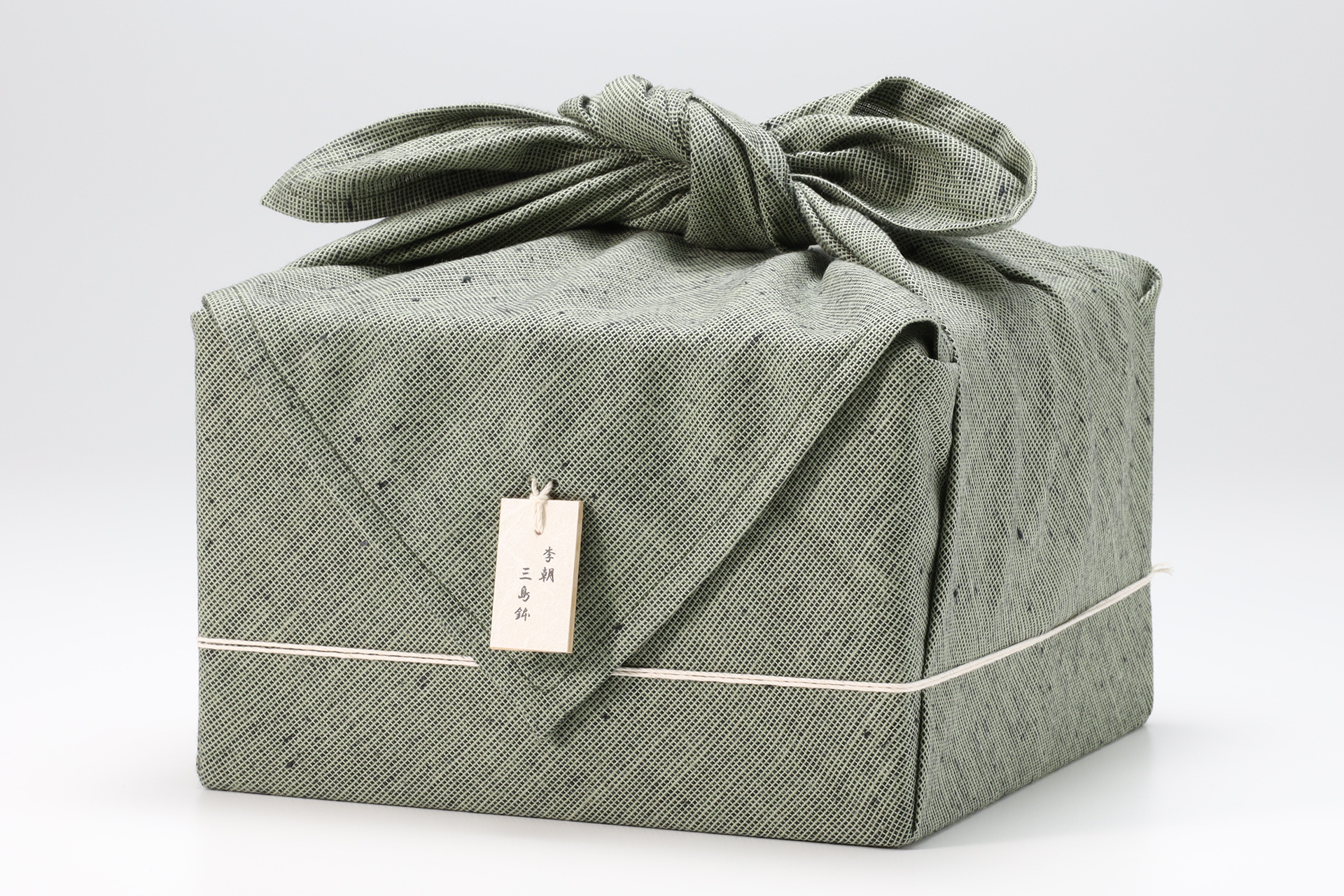The mishima bowl has a quiet atmosphere and a generous elegance. The glaze color is pale green gray, the base is brownish brown, and the curved edge is sharp and rigid. The white inlay covering the entire surface is carefully applied, and although it may seem simple, it is a very time consuming technique, and it is speculated that one of the reasons for its later disappearance is that it was difficult to mass produce. Although it is slightly larger in size, it can also be used as a tea bowl.
Inquiry
- Product Code
- 240420-1-1
- Period
- Joseon Dynasty
15-16th century
- Weight
- 440g
- Diameter
- 15.8×15.5cm
- Height
- 7.6cm
- Bottom Diameter
- 5.9cm
- Description
- Paulonia Box
- Condition
- There are two small gold repairs at the edge
It has beautiful bluish glaze, and is in good condition.
Mishima
Mishima is pottery with an inlay design. There is a strong theory that the name “Mishima” is derived from the fact that the inlay design resembles the character layout of the mishima calendar of mishima taisha shrine(shizuoka prefecture). There is also a theory that it was named after the fact that it was imported via Mishima. Inlaid celadon, which flourished during the goryeo dynasty, gradually declined, and in the 15th century, as if reflecting a new era after Yi Seong-gye founded the joseon dynasty in 1392, it changed to the style that made full use of inlay techniques. While the base is still soft and dry, designs are created using intaglio or flower stamps, and white clay is then embedded. The white inlays expressed on the base material containing a lot of iron give a sense of elegance, and have a quiet dignity that is modest yet gorgeous. Depending on the design and technique, it is classified into koyomide, hana-mishima, reihin-mishima, hori-mishima, hake-mishima, gohon-mishima, etc, and its pure taste and warmth have been cherished by japanese tea masters.



